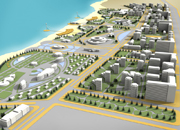 |
 |
 |
TOWN PLANNING
Our principles of Town planning, Urban planning, City Planning or Municipal Planning incorporate aesthetics, economics, design, ecology, sociology, sub-urbanization, geography, law, political science, transportation, heritage, culture, security, safety, quality, environment, standards of living, decay and statistics to guide and ensure the orderly development of settlements and communities.
Sustainable development and sustainability influences our every step of the decision making process. Modern lifestyles use too many natural resources, polluting or destroying ecosystems, increasing social inequality, creating urban heat islands, and causing climate change. Sometimes the concepts, instruments, technologies and methods considered to be sustainable, actually have a larger and more hazardous ecological footprint. The first academic publication about the ecological footprint was by William Rees in 1992, where he created a standardized measure of demand for natural capital that may be contrasted with the planet's ecological capacity to regenerate.
Stephen M. Wheeler, Department of City and Regional Planning at the University of California, Berkeley, in his 1998 article, defines sustainable urban development as "development that improves the long-term social and ecological health of cities and towns." He sketches a 'sustainable' city's features: compact, efficient land use; less automobile use, yet better access; efficient resource use; less pollution and waste; the restoration of natural systems; good housing and living environments; a healthy social ecology; a sustainable economy; community participation and involvement; and preservation of local culture and wisdom. More
 |
 |
 |